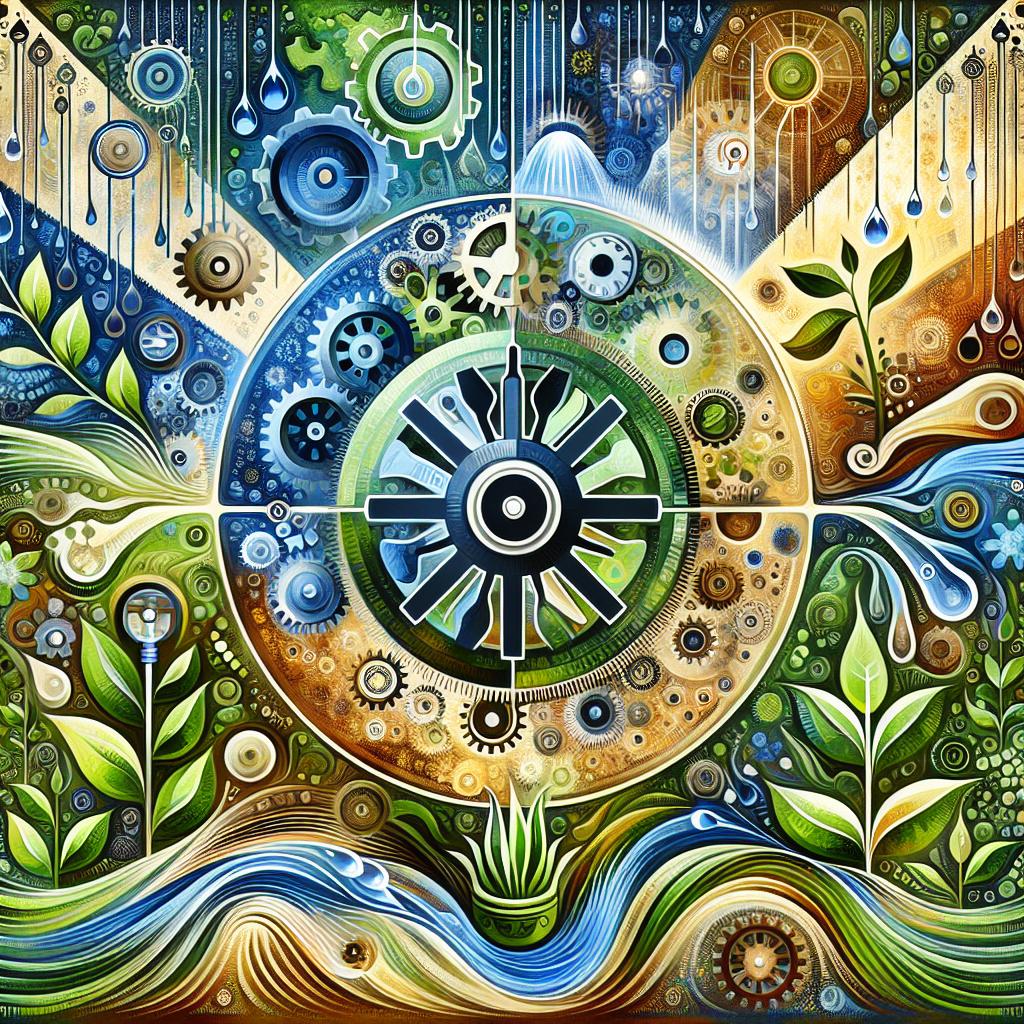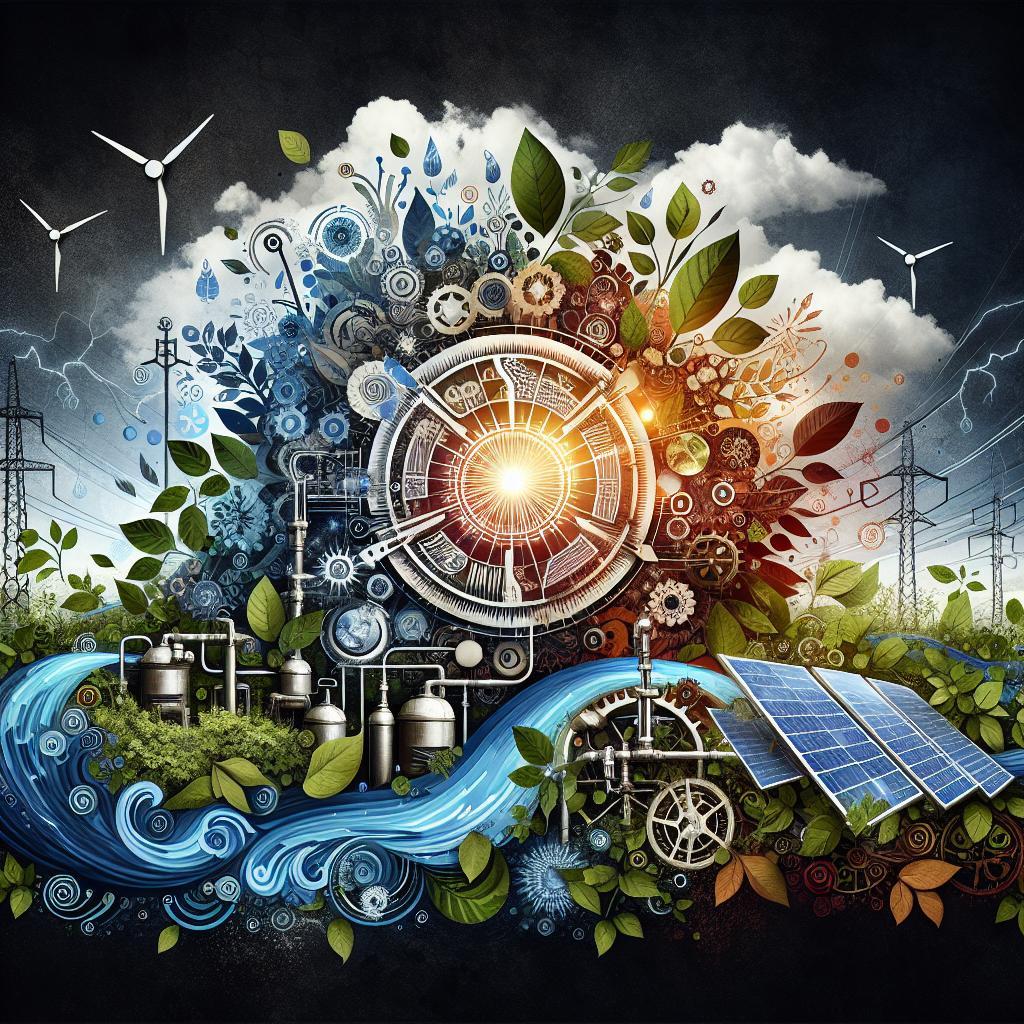This post may contain affiliate links which means I may receive a commission for purchases made through links. Learn more on my Private Policy page.
Unlocking Water Wisdom: best Practices for Energy Efficiency in Your Irrigation System
In the delicate dance of nurturing our gardens, fields, adn landscapes, irrigation systems play the starring role. But amidst the beauty of flourishing plants lies a question for every conscientious gardener and farmer: how can we keep our irrigation practices not only effective but also energy-efficient? As we navigate through the challenges of climate change and rising utility costs,optimizing our irrigation systems has never been more crucial.Join us on this enlightening journey, where we’ll uncover the best practices to enhance energy efficiency in your irrigation setup. From smart technology to thoughtful scheduling, we’ll explore friendly tips and transformative techniques that promise to not only save you money but also protect our precious resources. Let’s turn the tide on wasted energy and cultivate a greener future together!
Understanding Your Water Needs for Optimal Efficiency
To maximize the efficiency of your irrigation system, it’s crucial to first understand the specific water needs of your plants and landscape. Different plants have varying water requirements based on their type,size,and growth stage.By conducting a thorough assessment of your garden, you can create a customized watering schedule that aligns with the unique needs of each plant. Consider factors such as:
- Soil Type: Sandy soils drain quickly and may require more frequent watering, while clay soils retain moisture longer.
- Plant varieties: Native plants often need less water compared to exotic species.
- Climate Conditions: Pay attention to seasonal weather patterns that can affect evaporation rates.
Additionally, using technology can significantly enhance your understanding and management of water distribution. Implementing smart irrigation controllers and moisture sensors allows for real-time monitoring, ensuring that your system only activates when necessary. This proactive approach not only conserves water but also promotes healthier plant growth. To further simplify your water management plan, consider using a table to keep track of your irrigation practices:
| Plant type | Water Needs (per week) | Optimal Watering Time |
|---|---|---|
| Succulents | 0.5 inches | Early morning |
| Flowering plants | 1 inch | Evening |
| Vegetables | 1.5 inches | Morning |

Smart Scheduling: Timing Your Irrigation Right
Timing is everything, especially when it comes to watering your plants. By understanding the natural patterns of sunlight, wind, and humidity, you can vastly improve the efficiency of your irrigation system. Morning and evening are typically the best times for irrigation as temperatures are cooler, reducing evaporation. When planning your schedule, consider the following tips:
- monitor Weather Conditions: Use local forecasts to adjust watering schedules according to rainfall and temperature changes.
- Utilize Smart Controllers: invest in devices that automatically adjust the irrigation based on environmental data.
- Implement Cycle and Soak: This method allows water to penetrate deeply into the soil, reducing runoff and maximizing absorption.
incorporating these practices not only conserves water but also promotes healthier plants. Additionally, grouping different plant types based on their water needs can definitely help streamline your irrigation process. As a notable example, here’s a simple chart to visualize the optimal watering times for various plants:
| plant Type | Best Watering time |
|---|---|
| Succulents | Early Morning |
| Vegetables | Late Evening |
| Flowering Plants | both Morning & Evening |

Choosing the Right Technology to Maximize Energy Savings
When it comes to improving efficiency in your irrigation system, selecting the right technology is crucial for achieving optimal energy savings. Modern advancements offer a multitude of options that can significantly reduce energy consumption while ensuring that your plants receive the right amount of water. Consider investing in smart irrigation controllers that use weather forecasts and soil moisture levels to adjust watering schedules. Additionally, drip irrigation systems can minimize waste by delivering water directly to the roots, improving efficiency and reducing energy costs.
Another essential aspect is the integration of renewable energy sources such as solar power to run your irrigation systems. This lasting approach not only cuts down on energy bills but also contributes to a greener environment. To assist you in making informed decisions,here’s a simple comparison table of various technologies:
| Technology | Energy savings | Maintenance |
|---|---|---|
| Smart Controllers | Up to 30% | Low |
| Drip Irrigation | 20-50% | Medium |
| Solar-Powered Systems | Up to 70% | Medium |
By evaluating these options and aligning them with your specific irrigation needs,you can tailor a system that conserves energy and resources efficiently. Make sure to also take advantage of monitoring tools that provide real-time feedback on water usage,helping you stay on track with your energy-saving goals. implementing the right technology not only boosts your irrigation system’s performance but also enhances the overall sustainability of your farming practices.

Regular Maintenance Habits for a Sustainable system
To ensure your irrigation system operates efficiently and sustainably, cultivating regular maintenance habits is essential.Start by establishing a comprehensive monthly inspection routine, which includes checking for leaks, clogs, and signs of wear. Regularly verifying the functionality of key components like controllers, valves, and sprinklers helps maintain optimal performance and energy efficiency. Additionally, consider adjusting your watering schedule based on seasonal changes and weather forecasts, which can significantly reduce water waste and conserve energy.
Another effective practise involves the seasonal recalibration of your system. As plants grow and climate conditions shift, it’s crucial to adjust the irrigation settings accordingly to prevent over-or under-watering. Keeping a log of your system’s performance can provide valuable insights into its efficiency over time. Here’s a simple overview of beneficial maintenance tasks:
| Task | Frequency |
|---|---|
| Inspect for leaks | Monthly |
| Check sprinkler alignment | Monthly |
| Adjust watering schedule | Seasonally |
| Clean filters and emitters | Quarterly |
To Wrap It Up
As we wrap up our exploration of best practices for maintaining energy efficiency in your irrigation system, remember that every small step you take contributes to a greener and more sustainable future. By implementing these strategies, not only do you save energy and reduce your water bill, but you also play a vital role in preserving precious resources for generations to come.
Imagine your garden thriving with lush greenery, all while you bask in the satisfaction of knowing you’re doing your part to nurture the planet. Embrace the journey of optimizing your irrigation system—it’s a beautiful fusion of nature and technology working hand in hand.
So, roll up your sleeves, check those timers, and fine-tune those sprinklers! Your plants will thank you, and the Earth will too. Here’s to a flourishing garden and an energy-efficient future! Happy watering! 🌱✨
This post may contain affiliate links which means I may receive a commission for purchases made through links. Learn more on my Private Policy page.

